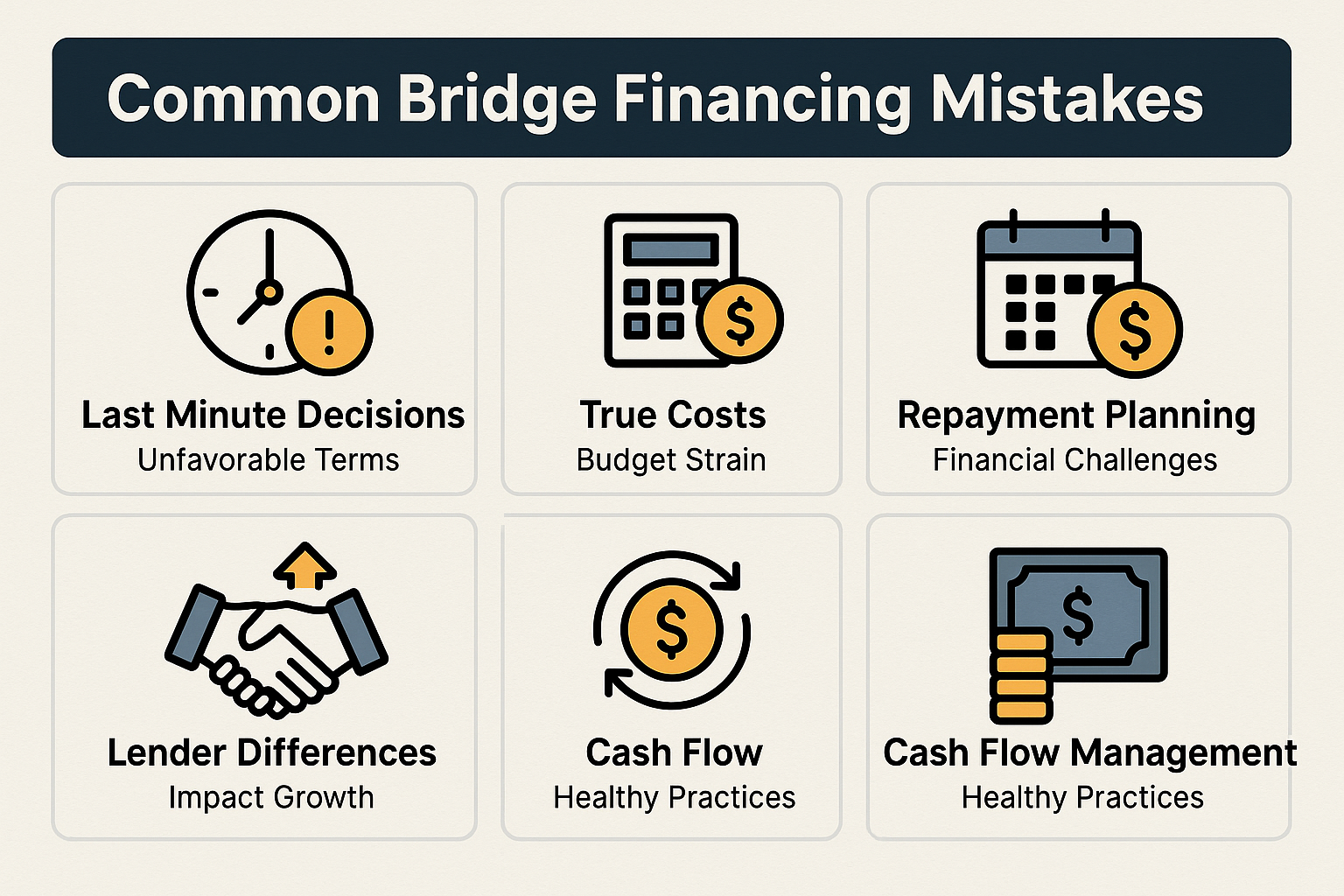Growing businesses often face a familiar challenge: needing capital right now while waiting for long-term funding to materialize. This timing mismatch can stall promising growth initiatives just when momentum matters most. Bridge financing during business growth offers a strategic solution, providing the short-term capital needed to keep scaling operations on track.
Bridge Financing Best Practices for Growing Businesses
When considering bridge financing during business growth, following proven practices can help maximize benefits while minimizing risks. These guidelines may help ensure your short-term capital strategy aligns with your broader business objectives.
- Time your application strategically: Apply for bridge financing before cash flow gaps become critical, giving yourself adequate runway for scaling operations without pressure.
- Calculate precise funding needs: Determine exactly how much short-term capital you need for specific growth initiatives like marketing campaigns or inventory expansion.
- Prepare comprehensive documentation: Gather financial statements, growth projections, and detailed plans showing how the funding will support your scaling efforts.
- Evaluate multiple funding options: Compare bridge financing terms from different lenders to find the best fit for your cash flow timeline and risk tolerance.
- Plan your exit strategy: Establish clear timelines for securing permanent funding or generating revenue to repay the bridge financing.
Common Bridge Financing Mistakes to Avoid

Understanding what not to do with bridge financing can be just as important as knowing best practices. These common pitfalls could potentially undermine your growth strategy and create unnecessary financial stress during critical scaling phases.
- Don't wait until the last minute: Rushing into bridge financing decisions when cash flow gaps are already impacting operations often leads to accepting unfavorable terms.
- Don't underestimate true costs: Failing to account for all fees, interest rates, and repayment terms can strain your budget and affect funding timing for other needs.
- Don't overlook repayment planning: Securing short-term capital without a clear strategy for repayment may create larger financial challenges down the road.
- Don't assume all bridge lenders are equal: Different lenders offer varying terms, approval speeds, and risk mitigation options that could significantly impact your business growth trajectory.
- Don't ignore your existing cash flow: Bridge financing works best when it complements, rather than replaces, healthy cash flow management practices.
Maximizing Bridge Financing Benefits During Growth Phases
Bridge financing during business growth typically works most effectively when businesses understand their specific capital needs and timing requirements. This type of short-term capital can provide the flexibility needed to pursue time-sensitive opportunities while maintaining operational stability.
Growing companies often find bridge financing particularly useful for covering immediate expenses while waiting for larger funding rounds to close. This might include maintaining marketing momentum, securing inventory for peak seasons, or covering payroll during revenue fluctuations. The key lies in viewing bridge financing as a strategic tool rather than an emergency measure.
Successful businesses often use bridge financing to maintain their competitive position during growth phases. When cash flow gaps threaten to slow scaling operations, having access to short-term capital can mean the difference between capitalizing on market opportunities and watching competitors gain ground. This approach requires careful planning and realistic assessments of both funding needs and repayment capabilities.
Bridge financing during business growth represents a tactical approach to managing the financial challenges that often accompany scaling operations. By understanding best practices, avoiding common mistakes, and strategically timing your funding decisions, you can potentially use short-term capital to maintain momentum while securing long-term financial stability. The key is treating bridge financing as part of a comprehensive growth strategy rather than a standalone solution.

.png)

.svg)





